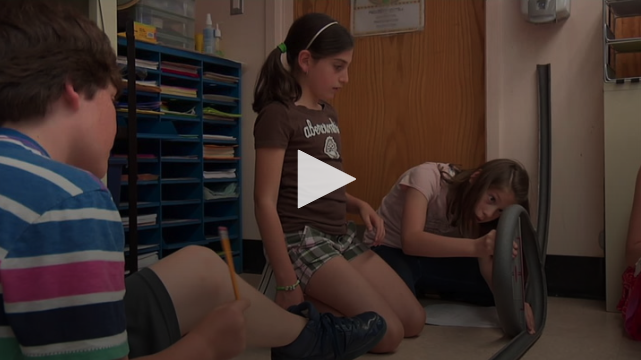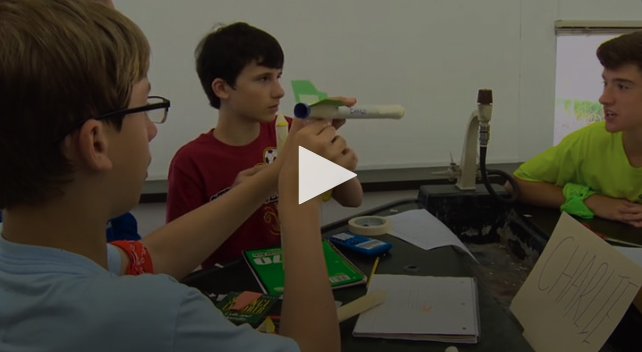As students walk into class, they gather all their materials and get to work right away on their collaborative projects.
Groups are independently engaged in their learning.
“I think greenhouses are going to be too expensive, but let’s look up the costs.”
“I think we should make a movie to tell others about our plan, because that’s more interesting than a PowerPoint.”
Does this scenario sound like a dream classroom, especially during the last few weeks of school? Well, what if this could be your classroom reality?
Keeping yourself and your students charged at the end of the school year sounds great and somewhat daunting. June can be taxing for students and teachers alike. However, the end of the year can also be the perfect time to try out new teaching practices and student-centered learning strategies.
If you lean in to the opportunity to reinvigorate your day-to-day routines, you can set yourself up to finish on a strong note, in terms of both instruction and social-emotional learning.
So, what’s the secret?
Engineering Tasks
One of the things I value most in the Next Generation Science Standards is the direct naming of the Engineering Practices and the crossover that these practices have into all content areas. The integration possibilities are vast when looking for places to embed engineering tasks. No matter the grade level or the content, you can integrate engineering tasks into your classroom.
Start With the End in Mind
Think about a problem you want students to address. This could be linked to your current curriculum, a local issue, something happening in the news, or a hot topic in class.
Is it a Pop-Up bakery with a contest for the most efficiently designed packaging? What about organizing and producing a movie premiere featuring student films or PSAs to teach others? How about a designing classroom portfolio celebration? Are you moving to a new classroom? Your class could help design and execute the packing process or redesign your classroom setup. The possibilities are endless! Find something that’s linked to what’s happening in the classroom and important to students.
Here are some great resources for inspiration:
- Teach Engineering: Free K-12 STEM Curriculum.
- Dream Big: Movies and activities for all grade levels.
- Design Squad: PBS Kids website with ready-to-teach guides.
- Boeing and Teaching Channel Units: Free, comprehensive units for fourth grade and up with teachers’ manuals and resources included.
Create a Timeline with Benchmarks
Look at the Engineering Process below and outline when and how students can use these steps. Plan out your calendar with checkpoints along the way. It’s very helpful to have students create a timeline with specific stages and due dates that are checked off by the teacher. This will allow students to budget time, stay on track, and get the necessary formative feedback.

I was inspired by the Roller Coaster Project on Teaching Channel, which used very simple materials to engage students in high-level scientific thinking and problem-solving.

VIDEO: Roller Coaster Physics: STEM in Action
Instead of the traditional home project where students create roller coasters as the culminating project, we embedded this project into the school day and invited families to see the final prototypes. A daily check-in with groups of students turning in their models and budgets allowed me to see concepts that were developing and areas that needed support.
Resources
Check out this high school level video showcasing the importance of hands-on, project-based learning for students new to English, with great ideas for all students.

VIDEO: Supporting ELLs Through Project-Based Learning
In this short video, see how a middle school teacher organizes an engineering project in his classroom.

VIDEO: Using Engineering Design in the Classroom
STEM in Kindergarten: A blog, video, and resources about pushing my own practices with a STEM Engineering Challenge using a picture book in Kindergarten.
Launch with Excitement
You have a great project and plan in place, now it’s time to get students excited. First and foremost, teacher attitude absolutely influences the level of engagement of students — both positively and negatively. If you show your enthusiasm and wonder about this project, so will your students!
Here are some tips for launching your engineering design challenge with energy and excitement:
- Show a short video highlighting the problem (news clip, TED talk, testimonials, etc.).
- Read a picture book that highlights the problem (librarians are great resources).
- Provide a short demo of the problem (e.g., a smashed muffin from the flimsy box).
- Display an email from the principal saying you can only spend $50.00 on a classroom celebration.
After you’ve hooked students with the problem, let them generate questions and ideas. Refrain from giving feedback or answers and live in this swirl of uncertainty for a little while.
Depending on your class needs, you can let your students lead the rest of the process as little or as much as you are comfortable. Keep in mind, student choice, voice, and an authentic audience greatly impact student buy-in and engagement.
Reflect, Revise, and Celebrate
As your students go through the Engineering Design Process, be prepared to reflect and revise. Perhaps the original materials aren’t meeting the needs of the project — so get new materials. Sometimes students discover different ideas or problems to solve along the way, so being flexible and giving more autonomy is empowering (with limits, of course).
Finally, plan a celebration or a means to showcase student work. All this hard work should go beyond the classroom walls.
Ideas for Celebration:
- Community Symposium
- Digital Sharing or Portfolio (Flipgrid or SeeSaw)
- Student presentations to a panel of experts
- Teach a buddy class
- Send emails or letters
- Video conference with an expert
Don’t worry if things don’t go as planned, this is an opportunity for you to learn alongside your students. Be brave, start when you’re ready, and take small steps.
Did you end your year with an engineering design challenge? How did it go? If you didn’t, what ideas do you have for the next school year? Share your ideas in the comments below so we can continue to get better together.






